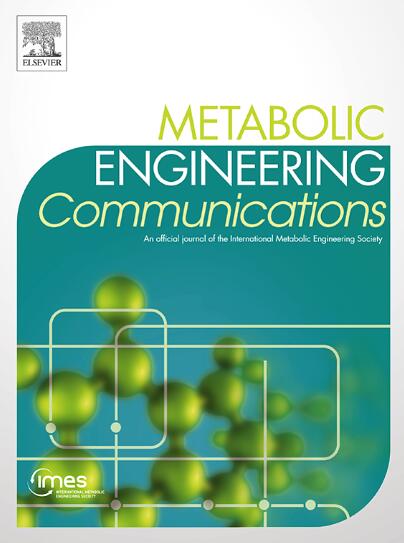Substrate stiffness-dependent metabolic reprogramming of iPSC-derived cardiomyocytes on physiological PDMS polymers
IF 4.1
Q2 BIOTECHNOLOGY & APPLIED MICROBIOLOGY
引用次数: 0
Abstract
Many cardiac pathologies are characterised by increased stiffness of the myocardium, due to excess deposition of extracellular matrix (ECM) proteins and structural remodelling, impacting the behaviour of cardiomyocytes (CMs). Metabolism of CMs shifts in cardiac pathologies, with the healthy heart primarily utilising fatty acids as its source of energy production, whilst the diseased heart switches to utilise glucose. The shift in metabolic source with stiffness of the myocardium has not been investigated.
To investigate the effect of ECM stiffnesses on iPSC-CM metabolism, iPSC-CMs were cultured on polydimethylsiloxane (PDMS) substrates of healthy and fibrotic stiffness (20 kPa and 130 kPa respectively) and plastic. Cellular metabolism of iPSC-CMs was assessed through isotope-labelled mass spectrometry with central carbon tracing as well as real-time cellular bioenergetics using extracellular flux analysis. Key metabolic genes were investigated at transcript and protein level, with proteomics analysis conducted to identify protein profiles on substrate stiffnesses.
Mass spectrometry data revealed greater utilisation of glucose in iPSC-CMs cultured on plastic compared to softer PDMS substrates, indicating greater glycolytic activity. Extracellular flux analysis demonstrated greater lactic acid efflux from iPSC-CMs cultured on plastic substrates, reflective of increased glycolytic flux and a shift towards aerobic glycolysis as the primary source of ATP synthesis. This study revealed culture of iPSC-CMs on traditional cell culture plastics or glass coverslips displaying pathological metabolism, highlighting the use of physiological substrates for metabolic investigation.
ipsc衍生的心肌细胞在生理PDMS聚合物上的代谢重编程
许多心脏疾病的特征是由于细胞外基质(ECM)蛋白的过度沉积和结构重塑,影响心肌细胞(CMs)的行为,导致心肌硬度增加。在心脏疾病中,CMs的代谢会发生变化,健康的心脏主要利用脂肪酸作为其能量产生的来源,而患病的心脏则转而利用葡萄糖。代谢源随心肌硬度的变化尚未被研究。为了研究ECM刚度对iPSC-CM代谢的影响,我们将iPSC-CM培养在健康和纤维化刚度(分别为20 kPa和130 kPa)和塑性的聚二甲基硅氧烷(PDMS)基质上。iPSC-CMs的细胞代谢通过中心碳示踪的同位素标记质谱法和细胞外通量分析的实时细胞生物能量学进行了评估。在转录物和蛋白质水平上研究了关键代谢基因,并进行了蛋白质组学分析,以确定底物刚度的蛋白质谱。质谱数据显示,与较软的PDMS底物相比,在塑料上培养的iPSC-CMs中,葡萄糖的利用率更高,表明糖酵解活性更高。细胞外通量分析表明,在塑料基质上培养的iPSC-CMs有更大的乳酸外排,这反映了糖酵解通量的增加和有氧糖酵解作为ATP合成的主要来源的转变。本研究揭示了iPSC-CMs在传统细胞培养塑料或玻璃盖上的培养,显示了病理代谢,强调了生理底物在代谢研究中的应用。
本文章由计算机程序翻译,如有差异,请以英文原文为准。
求助全文
约1分钟内获得全文
求助全文
来源期刊

Metabolic Engineering Communications
Medicine-Endocrinology, Diabetes and Metabolism
CiteScore
13.30
自引率
1.90%
发文量
22
审稿时长
18 weeks
期刊介绍:
Metabolic Engineering Communications, a companion title to Metabolic Engineering (MBE), is devoted to publishing original research in the areas of metabolic engineering, synthetic biology, computational biology and systems biology for problems related to metabolism and the engineering of metabolism for the production of fuels, chemicals, and pharmaceuticals. The journal will carry articles on the design, construction, and analysis of biological systems ranging from pathway components to biological complexes and genomes (including genomic, analytical and bioinformatics methods) in suitable host cells to allow them to produce novel compounds of industrial and medical interest. Demonstrations of regulatory designs and synthetic circuits that alter the performance of biochemical pathways and cellular processes will also be presented. Metabolic Engineering Communications complements MBE by publishing articles that are either shorter than those published in the full journal, or which describe key elements of larger metabolic engineering efforts.
 求助内容:
求助内容: 应助结果提醒方式:
应助结果提醒方式:


